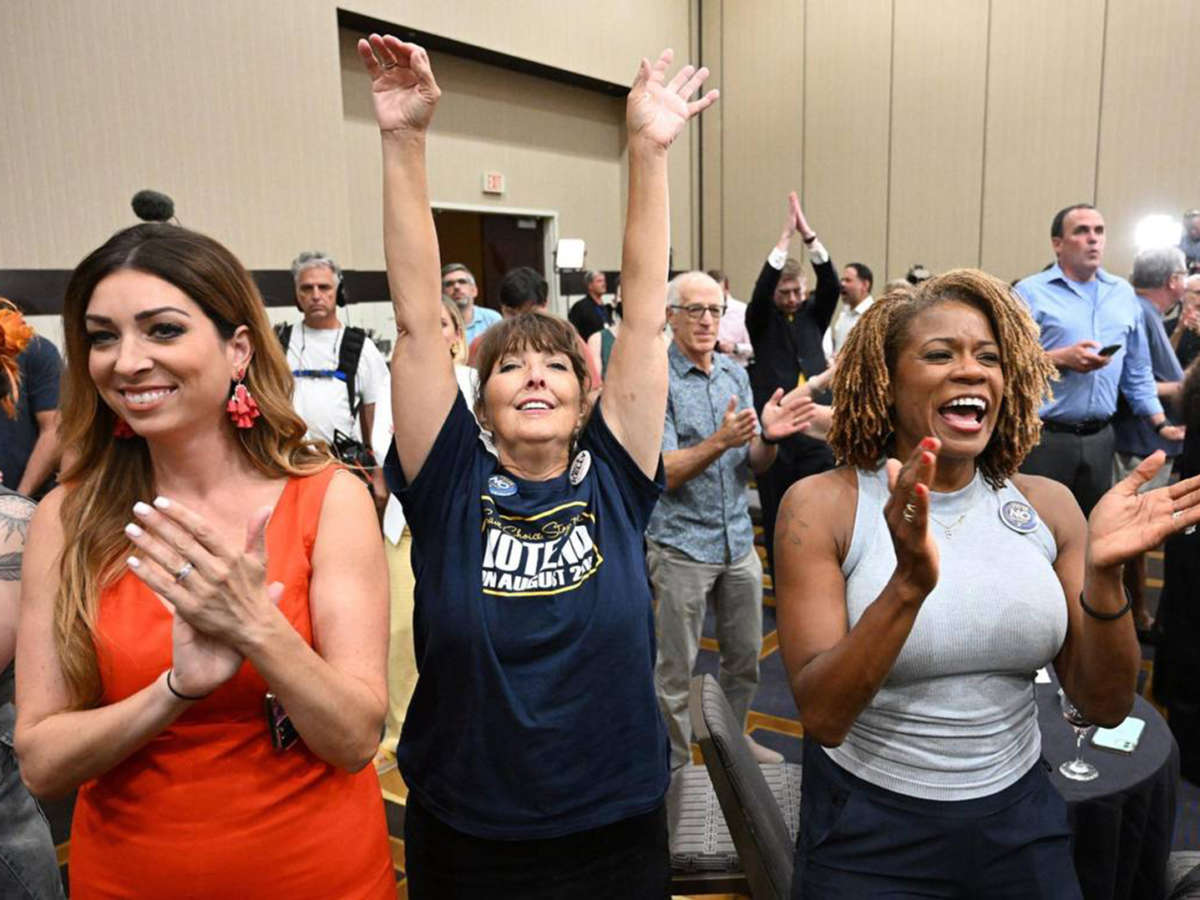In 1922, the newspaper editor William Allen White wrote, “When anything is going to happen in this country, it happens first in Kansas.” On August 2, voters in Kansas proved him right, going to the polls for the first referendum on abortion since the fall of Roe v. Wade. The result was an emphatic rejection of a state constitutional amendment that would have allowed state legislators to severely restrict access to abortion or ban the procedure outright. Pollsters were left scrambling as people across the country expressed surprise: How could this have happened in a state like Kansas?
A few things about the Kansas vote stand out. First, the polls, which reported higher support for the anti-abortion amendment, were simply wrong in predicting that it would pass in the majority-red state. Second, turnout was historically high for a primary, with over 900,000 Kansans voting, rivaling numbers seen only in the state’s general elections. The reason for this is clear: A majority of Kansas voters were energized to act in response to the brazen and authoritarian nature of the Dobbs v. Jackson Women’s Health Organization ruling. Third, the voters that rejected the amendment were politically and geographically diverse, refuting commonly held and wrong-headed assumptions about the priorities of ordinary Kansans. Democrats and Republicans alike came out in support of the right to abortion, as well as a significant number of Independents; they voted not just in big cities like Kansas City and Wichita, but in poorer, rural and traditionally Republican counties, including 14 that went for Donald Trump in 2020. Finally, organizers built a powerful and expansive coalition that was able to reach into nearly every pocket of the state, not limiting the outreach to any one demographic of people and engaging women’s rights activists, doctors, faith leaders, and more.
The vote in Kansas is a desperately welcome rejoinder to the reactionary majority that has been smuggled into the Supreme Court over the past few decades. It is also a vital reminder that beneath the too-often superficial and media-friendly narratives we are fed about our politically divided country, there is a sea of people willing to stand together on abortion and much more. That this happened in middle America is especially resonant, as Kansan writer Sarah Smarsh keenly observed. “In a state where registered Republicans far outnumber Democrats, the results reveal that conservative politicians bent on controlling women and pregnant people with draconian abortion bans are out of step with their electorates, a majority of whom are capable of nuance often concealed by our two-party system,” she said. “This is not news to many red-state moderates and progressives, who live with excruciating awareness of the gulf between their decent communities and the far-right extremists gerrymandering, voter-suppressing and dark-moneying their way into state and local office.”
Indeed, what Kansas has to teach us goes far beyond abortion. Just as a majority of Americans think abortion should be legal, people across party and region favor policies that expand rights and access to the essential building blocks of a dignified life. For example, in recent years, 72 percent of Americans have said they prefer a government-run health care plan, and more than 70 percent support raising the minimum wage, including 62 percent of Republicans. This is also true in Kansas, where 78 percent of residents support expanding Medicaid despite the state government’s refusal to do so. This and related issues are of especially grave concern in a state where 34 percent of people are poor or low-income, with hundreds of thousands more hovering above the buckling ground of economic precarity.
When we look at referendums like the one in Kansas, we should see more than just a singular act of defiance — we should recognize the rumblings of a sleeping giant of popular opinion being awakened into political action. In the 2020 elections, over 850,000 eligible voters in Kansas had household incomes of less than $50,000. More than 60 percent of this segment of “poor and low-income voters,” across a range of household sizes, participated in that year’s presidential election. And while the vast majority of them were white (over 500,000), this percentage also included Black, Asian, Latinx and Indigenous voters.
In Kansas, we are witnessing what is possible when our electorate is mobilized around issues of real and pressing concern for everyday people. There is a lesson here for all of us; the kind of voting coalitions that can be forged in defense of reproductive rights are the very same that could unite people around a transformative vision for the nation, on everything from climate to housing to labor. In fact, in a time of inflation, looming recession and sharply felt inequality, the majority of Americans are hurting and hungry for change. They are also prepared to fight for it, as long as the stakes are clear and genuine solutions are offered — in other words, as long as there is something to fight for.
This also means that we must be willing to fight for the support of people outside of our comfort zones and the brittle taxonomy of our two-party system. We must look past conventional political wisdom and electoral maps and toward a nation that is not so easily divided into “red state” and “blue state,” but instead brimming with states ready to be organized along more expansive lines. There is much to learn from Kansas and the organizers who reached deep into their state to build a diverse voting bloc strong enough to beat back a disciplined movement of Christian nationalists, shocking the nation.


